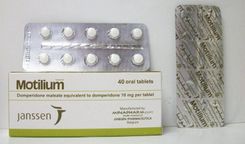This is an automatically translated article.
Xtampza ER drug has the main ingredient Oxycodone Hydrochloride, which belongs to the Opioid family of pain relievers. Xtampza ER is commonly used in the treatment of moderate to severe pain. The necessary information about the composition, uses, dosage and side effects of Xtampza ER medicine will help patients and their families improve treatment results.
1. What is Xtampza ER?
Xtampza ER is made in soft capsules with different concentrations of 9 mg (equivalent to 10 mg Oxycodone HCl), 13.5 mg (equivalent to 15 mg
Oxycodone HCl), 18 mg (equivalent to 20 mg Oxycodone). HCl), 27 mg (equivalent to 30 mg Oxycodone HCl) and 36 mg (equivalent to 40 mg Oxycodone HCl), with the main ingredients including:
Active ingredient: Oxycodone Hydrochloride. Excipients: Myristic Acid, Yellow Beeswax, Carnauba Wax, Stearoyl polyoxyl-32 glycerol, Magnesium stearate and Colloidal Silicon dioxide. Capsule shell contains Titanium dioxide, Hypromellose and water enough for 1 film coated tablet. Oxycodone Hydrochloride is an Opioid agonist and is relatively selective for the Mu-Opioid receptor (MOR), although it can bind to other Opioid receptors at higher doses. The primary therapeutic effect of Oxycodone is analgesia, and doses of Oxycodone Hydrochloride are adjusted to provide both adequate analgesia and possibly to be limited by adverse reactions, including respiratory and neurological depression. center.
The exact mechanism of Oxycodone Hydrochloride's analgesic effect is unknown. However, specific CNS opioid receptors for endogenous compounds with opioid-like activity have been identified throughout the brain and spinal cord and are thought to play a role in the analgesic effects of Xtampza. ER.
2. What diseases does Xtampza ER treat?
Xtampza ER is indicated for the treatment of moderate to severe pain symptoms that can only be controlled by Opioid analgesics or for the treatment of chronic pain requiring long-term release of Opioid analgesics. .
Contraindications of Xtampza ER drug in the following cases:
Hypersensitivity to any component of Xtampza ER drug. History of hypersensitivity to other drugs containing Oxycodone Hydrochloride. History of hypersensitivity to other opioid analgesics. Patients with severe respiratory depression causing hypoxia with or without hypercapnia. Acute bronchial asthma or severe bronchial asthma. There is a condition or suspicion of a gastrointestinal obstruction such as paralytic ileus. Patients with acute abdominal syndrome or delayed gastric emptying. Pain relief within 12-24 hours after surgery. Children under 18.
3. Dosage and how to use Xtampza ER
Adults who have never used Opioids: Initial dose: Take 1 tablet (9 mg) / time x 2 times / day (every 12 hours). Opioid intolerant adults: Initial dose: Take 1 tablet (9 mg)/time x 2 times/day (every 12 hours). Do not increase the starting dose because it can cause severe respiratory depression. Children: The use of Xtampza ER is recommended in children under 18 years of age. People with severe renal impairment: 1⁄2 of the usual dose is recommended. Note:
Xtampza ER with food. Caution should be exercised when switching from opioids, methadone, or fentanyl to Xtampza ER, so total dose conversion should be in the 50-75% range.
4. Side effects encountered when using Xtampza ER
Treatment with Xtampza ER drug with high doses or prolonged, can cause side effects such as:
Visual disturbances: Blurred vision, sensitivity to light. Digestive disorders: Anorexia, dysphagia, nausea, vomiting, abdominal pain, epigastric pain, diarrhea, gastroesophageal reflux. Body as a Whole: Chills, withdrawal syndrome, fatigue, malaise, edema, mouth sores, anaphylaxis. Metabolic disorders: Decreased appetite, increased blood glucose. Musculoskeletal and connective tissue disorders: Arthralgia, back pain, musculoskeletal pain. Nervous system disorders: Migraine, tremor, lethargy, memory impairment, poor quality sleep, epilepsy. Psychiatric disorders: Anxiety, insomnia, withdrawal syndrome, nightmares, euphoria, restlessness. Respiratory disorders: Cough, sore throat, nasopharyngitis, dyspnea, bronchospasm. Skin: Rash, urticaria, increased sweating, night sweats, cellulitis. Cardiovascular: Hot flashes, increased blood pressure, increased heart rate, orthostatic hypotension. Biochemistry: Increased liver enzymes Should stop taking the drug as soon as the above side effects or any other abnormal symptoms are detected after using Xtampza ER, and patients and family members should promptly notify the doctor. about the use of Xtampza ER or immediately go to a medical facility for timely treatment.
5. Note the use of Xtampza ER in the subjects
Use caution when using Xtampza ER in the elderly, debilitated and children under 12 years of age. Xtampza ER should be used with caution in patients with a history of opioid abuse. If the drug is to be discontinued, the dose should be reduced gradually to prevent withdrawal syndrome. Xtampza ER should be used with caution in patients with severe renal impairment, history of or existing cardiovascular, pulmonary, hypothyroidism, Addison's disease, adrenocortical insufficiency, pancreatitis, biliary tract disease, mental disorders due to alcohol intoxication, convulsions, epilepsy, people taking MAO inhibitors within 14 days. Prolonged use of Opioid analgesics such as Xtampza ER during pregnancy may cause Opioid withdrawal syndrome in the neonate. In addition, some studies have shown that Oxycodone Hydrochloride crosses the placenta and may cause respiratory depression and psychoactive effects in the neonate, when Xtampza ER is used during labor. Therefore, caution should be exercised when deciding to use Xtampza ER in these subjects. Published lactation studies have reported oxycodone concentrations in breast milk, with the potential for serious adverse reactions, including excessive sedation or respiratory depression in breastfed infants. mom. Therefore, patients are advised not to breast-feed during treatment with Xtampza ER. Drivers or machine operators may experience symptoms such as blurred vision, headache, dizziness, dizziness... after using Xtampza ER.
6. Xtampza ER drug interactions:
Interactions with other drugs
Concomitant use of Xtampza ER with inhibitors of CYP3A4 such as the antibiotic Macrolide (Erythromycin), antifungal drug Azole (Ketoconazole), protease inhibitor (Ritonavir) may increase plasma concentrations. Oxycodone plasma concentrations, leading to an increase or prolongation of opioid effects. Concomitant use of Xtampza ER with inducers of CYP3A4 such as Rifampin, Carbamazepine, Phenytoin may decrease oxycodone plasma concentrations, leading to decreased efficacy of Xtampza ER or onset of withdrawal syndrome in patients. . Concomitant use of Xtampza ER with CNS depressants such as alcohol, benzodiazepines, other sedatives, hypnotics, anxiolytics, muscle relaxants, anesthetics, antipsychotics, other opioids ...may increase the risk of hypotension, respiratory depression, deep sedation, coma and death. Concomitant use of Xtampza ER with other drugs affecting the Serotonergic neurotransmitter system such as SSRIs, SNRIs, TCAs, MAOs can lead to Serotonin syndrome. Butorphanol, Nalbuphine, Pentazocine, Buprenorphine may decrease the analgesic effect of Xtampza ER. Xtampza ER can enhance the neuromuscular blocking activity of skeletal muscle relaxants and increase the degree of respiratory depression. Concomitant use of Xtampza ER with anticholinergic drugs may increase the risk of urinary retention, severe constipation, possibly leading to paralytic ileus. Above is basic information and unwanted effects of Xtampza ER drug. In order to bring the best treatment results for themselves and their families, before using, patients need to carefully read the instructions of the drug and strictly follow the treatment instructions of the treating doctor.
Please dial HOTLINE for more information or register for an appointment HERE. Download MyVinmec app to make appointments faster and to manage your bookings easily.













